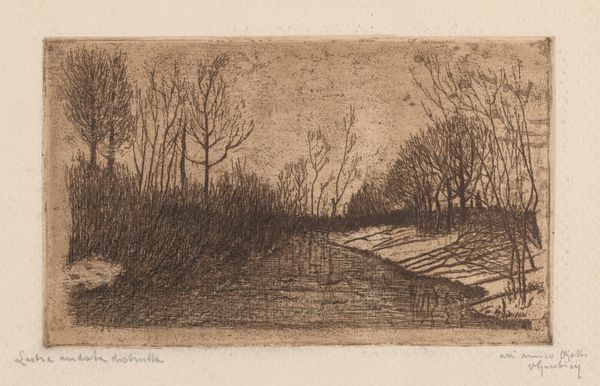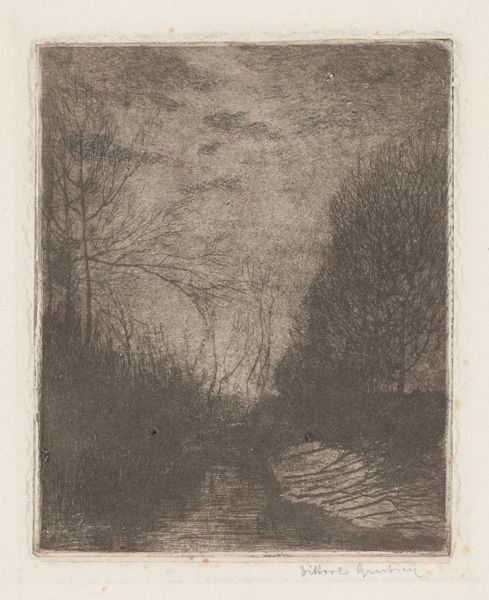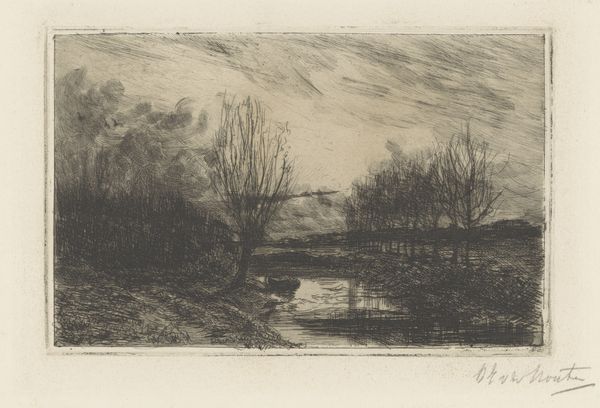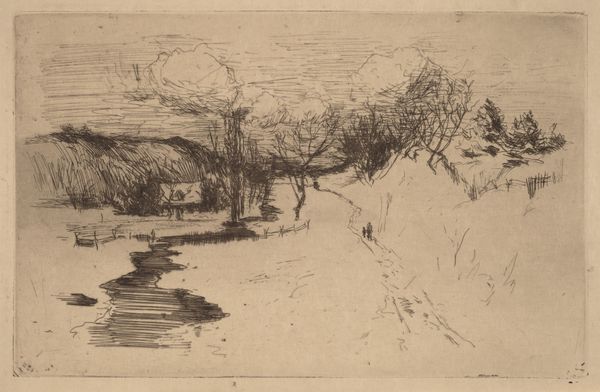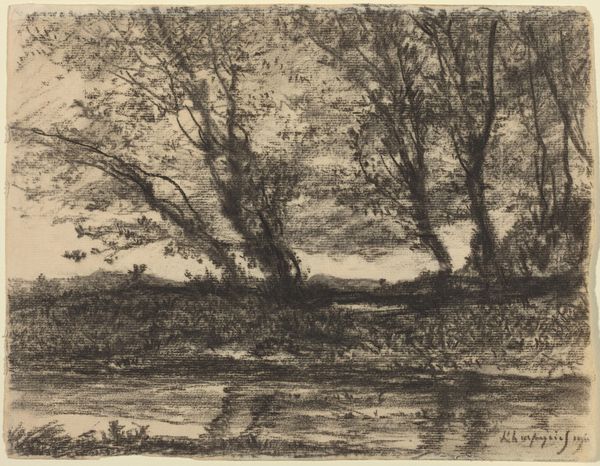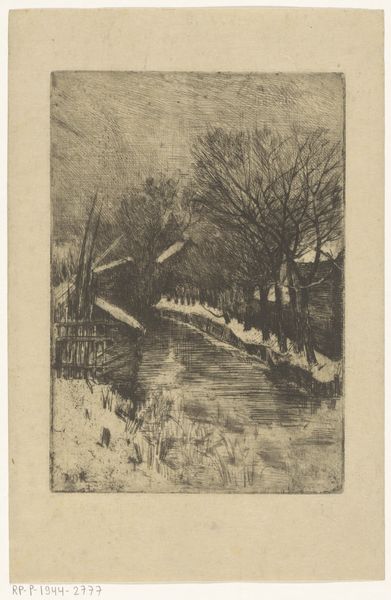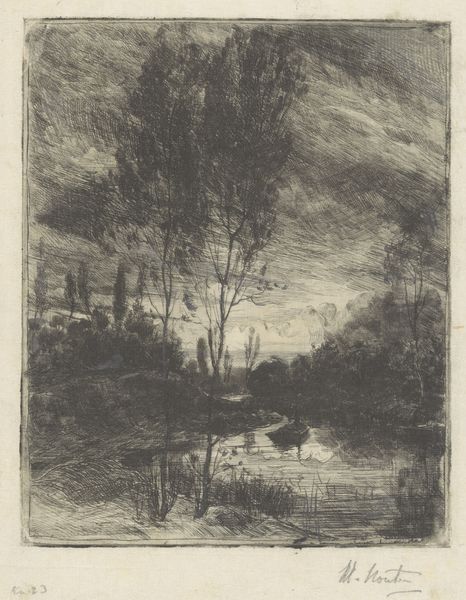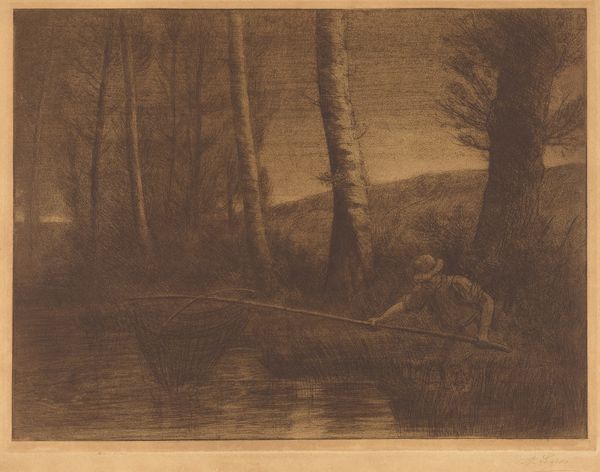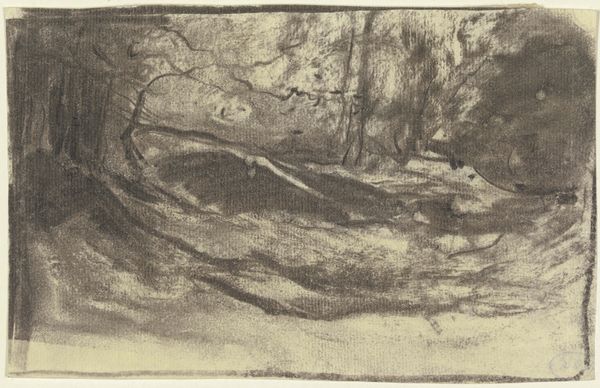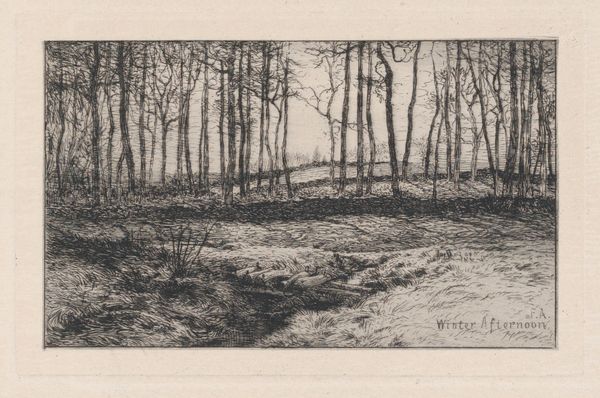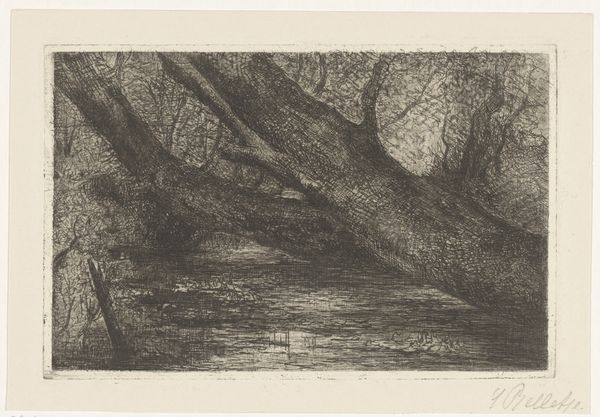
Dimensions: plate: 14.7 × 24.6 cm (5 13/16 × 9 11/16 in.) sheet: 17.8 × 29 cm (7 × 11 7/16 in.)
Copyright: National Gallery of Art: CC0 1.0
Vittore Grubicy made this etching, Winter Evening, sometime near the turn of the 20th century. It depicts a somber, snow-covered landscape, typical of the artist's native Lombardy region of Italy. Grubicy was deeply involved in the Italian art scene, promoting the Divisionist style, which, similar to French pointillism, experimented with optical effects through divided colors. Here, the close, dark tones create a somewhat melancholic, even claustrophobic atmosphere. Consider the social context: Italy at this time was undergoing rapid industrialization, which brought changes to rural life. Grubicy, through his art and writing, was interested in Theosophy, an occult movement that looked to spiritualism and nature as an alternative to modernity. His landscape imagery may reflect a nostalgic longing for a pre-industrial past and a critique of the present's social upheaval. Art historians often consult letters, diaries, and exhibition reviews to better understand the artist and the cultural values that shaped their work. By examining these sources, we can appreciate how art is more than just aesthetic expression, it's a reflection of social and historical circumstances.
Comments
No comments
Be the first to comment and join the conversation on the ultimate creative platform.
